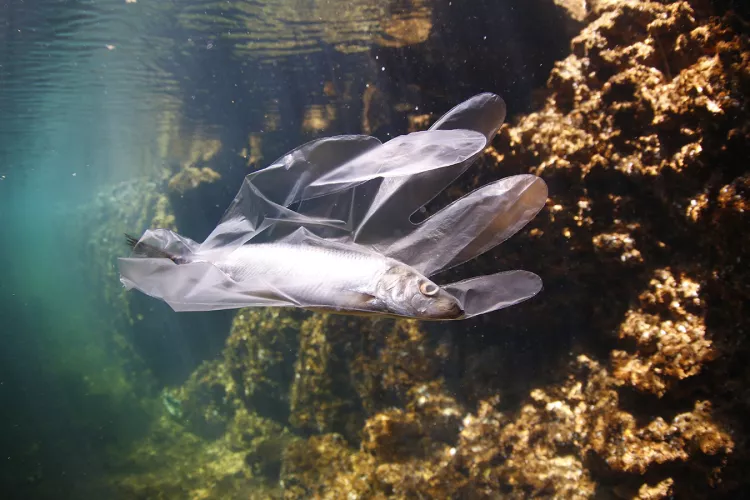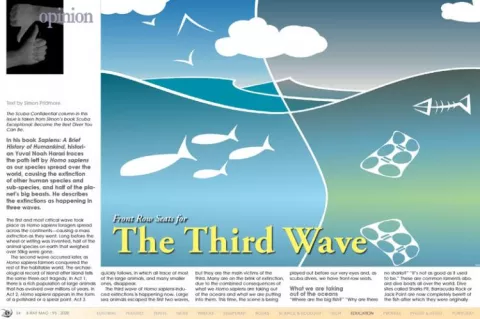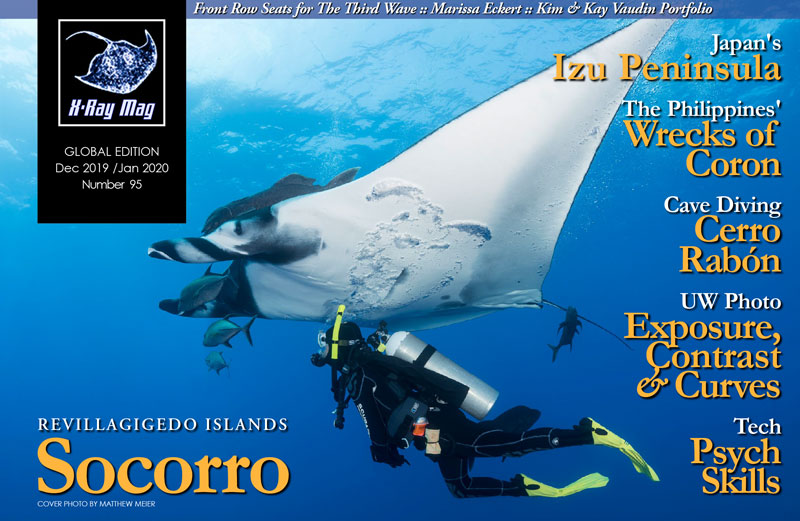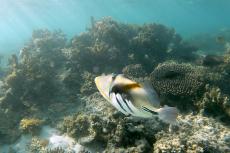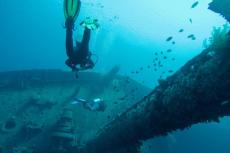In his book Sapiens: A Brief History of Humankind, historian Yuval Noah Harari traces the path left by Homo sapiens as our species spread over the world, causing the extinction of other human species and sub-species, and half of the planet’s big beasts. He describes the extinctions as happening in three waves.
Contributed by
The first and most critical wave took place as Homo sapiens foragers spread across the continents—causing a mass extinction as they went. Long before the wheel or writing was invented, half of the animal species on earth that weighed over 50kg were gone.
The second wave occurred later, as Homo sapiens farmers conquered the rest of the habitable world. The archaeological record of island after island tells the same three-act tragedy. In Act 1, there is a rich population of large animals that has evolved over millions of years. In Act 2, Homo sapiens appears in the form of a potshard or a spear point. Act 3 quickly follows, in which all trace of most of the large animals, and many smaller ones, disappear.
The third wave of Homo sapiens-induced extinctions is happening now. Large sea animals escaped the first two waves, but they are the main victims of the third. Many are on the brink of extinction, due to the combined consequences of what we Homo sapiens are taking out of the oceans and what we are putting into them. This time, the scene is being played out before our very eyes and, as scuba divers, we have front-row seats.
What we are taking out of the oceans
“Where are the big fish?” “Why are there no sharks?” “It’s not as good as it used to be.” These are common laments aboard dive boats all over the world. Dive sites called Sharks Pit, Barracuda Rock or Jack Point are now completely bereft of the fish after which they were originally named. Similar complaints abound in the world of sport fishing too. The reason is simple. Advanced commercial fishing technology and the insatiable demand for seafood have led to harvests of fish in quantities that cannot be sustained. We are taking fish out of the ocean at a faster rate than they can reproduce.
Around coral reefs, divers see far fewer animals at the high end of the food chain, such as sharks, tuna and barracuda, or schooling fish like snappers. There are hardly any of the large slow-moving animals like bumphead parrotfish, groupers and Napoleon wrasse left. What do these fish all have in common? People like to eat them.
As divers, we see things that most people do not. We are witnesses to the emptiness of the reefs. To most people, tuna is pink shredded meat that comes out of a can. To us, a tuna is a sleek, mean, silver killing machine. Our vantage point makes it easier for us to understand the seriousness of the situation. You can argue that this also gives us certain responsibilities. Here is a story that illustrates the point perfectly.
Martina was sitting in a seafood restaurant on a beach in Bali. She had just completed a dive trip in the Komodo National Marine Park in Central Indonesia. During the trip, a member of the crew on her vessel had taken an underwater video of a long-line fishing boat operating in park waters. The whole park is designated as a no-fishing zone, but the regulations are poorly enforced, and endemic corruption enables fishing boats to operate in the park with impunity. The video showed sharks, tuna, trevally, barracuda and other large fish struggling or hanging limp on the line, which was several kilometres long, with thousands of hooks on it.
Martina looked at the menu in the restaurant and noticed how many tuna and barracuda options there were. The video was still very fresh in her mind and she remembered how frustrated and powerless she had felt watching it.
“Surely someone can do something about this,” she exclaimed at the time, and was horrified to learn that nobody would or could do anything to stop the illegal carnage. She wracked her brains to think of something that she could do about it herself, but all she could come up with was to share the video on Facebook and vent her anger in the comments, even though she knew this would achieve nothing.
It was the menu that gave her the idea of something useful she could do. It occurred to her that the main reason the fishermen caught the fish was to satisfy the huge market for seafood, of which the restaurant she was sitting in was just a small part. “If I eat fish,” she thought, “I am part of the problem. If I stop eating fish, then maybe I contribute in some small way to the solution.”
She ordered chicken fried rice.
What we are putting into the oceans
It is not only our hunger for seafood that is destroying life in the oceans. What we put in the oceans has an equally disastrous effect as what we take out of them. Coastal construction releases soil into the water, which smothers coral reefs. Elsewhere, runoff from cultivated land, carried into the ocean by rain or rivers and streams, is an enormous unseen polluter.
The most visible pollution, something that divers see with increasing frequency, is plastic trash, on the surface, in mid-water, stuck on coral outcrops or lying on the seabed. At some dive sites, the trash is ever-present. At others, it is there only at certain times of the year when tides and winds take it from mid-ocean, where it usually circulates unnoticed, and bring it closer to the coast.
Manufacturers produce products and sell them in plastic packaging. Fresh food is presented in supermarkets wrapped in plastic, supposedly on hygiene grounds. The packaging is discarded after purchase. Hardly any of it is recycled, anywhere in the world, no matter which bin we put it in. In some countries that are organised enough, most trash goes into landfills, where it is eventually covered over—out of sight, out of mind. The rest is put on ships and sent away to become someone else’s problem.
In other countries which are not so organised, trash is dumped in ravines or unsealed dumping grounds and, when it rains, much of it is carried away and eventually arrives in the sea—also out of sight and out of mind for most people, but not for us divers. We see it all too clearly. Our reaction is often one of disgust. “How can they be so irresponsible?” (Note that it is always “they” who are the problem.)
If only it were so straightforward. The plastic water bottle floating on the surface when you came up from your dive just now could be the one you were given in your hotel room the previous week and that you had carefully put in the waste bin. The plastic bag you saw wrapped around the sea fan could be the one that you had put in the recycling bin in your home country several months earlier. The bag subsequently became part of a massive trash shipment, that your country paid to have taken away to another country, but which was instead dumped into the ocean by the carrier vessel en route.
This is appalling, I hear you say. What can we do? The answer is similar to the solution Martina came up with, when she wanted to play a role in reducing the demand for seafood. Wherever we are in the world, at home or away, every plastic bottle, plastic straw, takeaway coffee cup, plastic bag or polystyrene container we use will probably end up in a landfill at best. At worst, it will end up in the sea. So, we can make a difference by not using that bottle, straw, cup, bag or box in the first place. Choose packaging-free and reusable alternatives instead.
After all, if we divers, sitting in our front-row seats, do not do everything in our power to help save the oceans, then what hope is there? ■
This Scuba Confidential column in issue #95 is taken from Simon’s book Scuba Exceptional: Become the Best Diver You Can Be.
Simon Pridmore is the author of the international bestsellers Scuba Confidential: An Insider’s Guide to Becoming a Better Diver, Scuba Professional: Insights into Sport Diver Training & Operations and Scuba Fundamental: Start Diving the Right Way.
He is also the co-author of Diving & Snorkeling Guide to Bali and Diving & Snorkeling Guide to Raja Ampat & Northeast Indonesia, and a new adventure travelogue called Under the Flight Path.
His recently published books include Scuba Exceptional: Become the Best Diver You Can Be, Scuba Physiological: Think You Know All About Scuba Medicine? Think Again! and Dining with Divers: Tales from the Kitchen Table.
For more information, see his website at: SimonPridmore.com.

